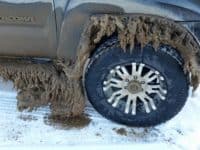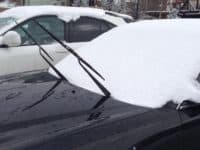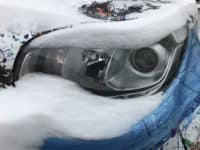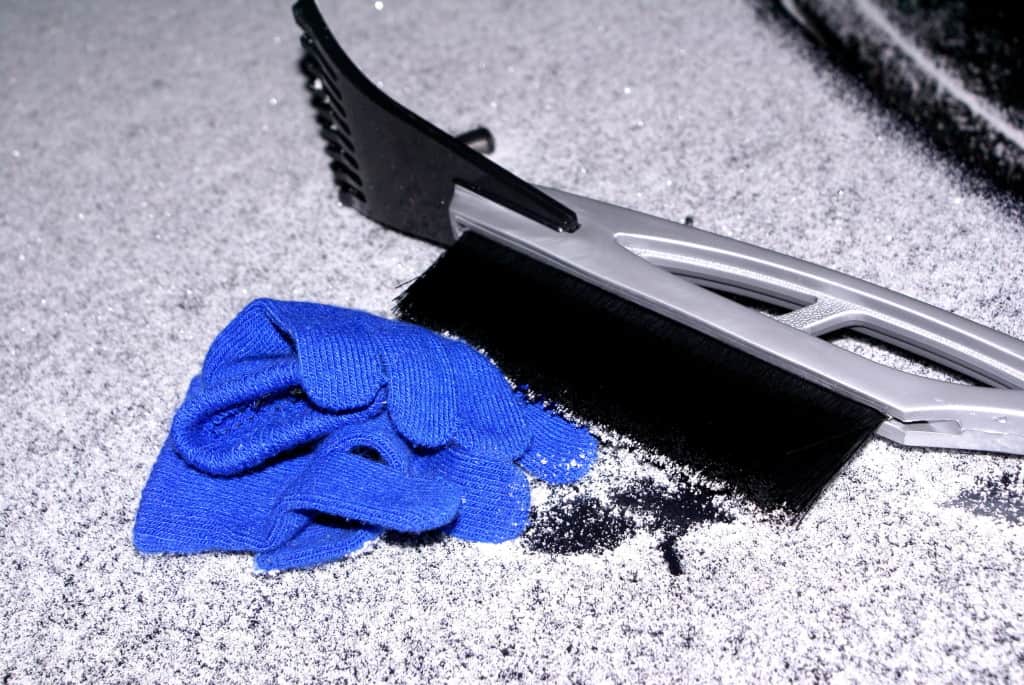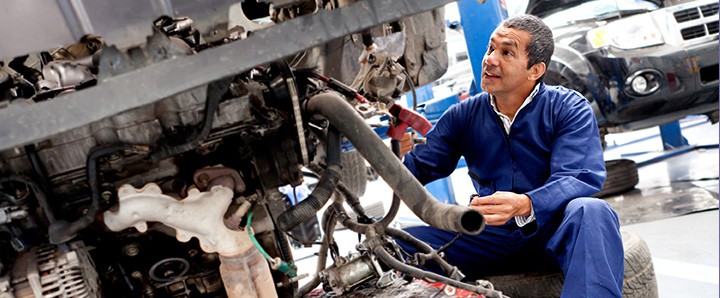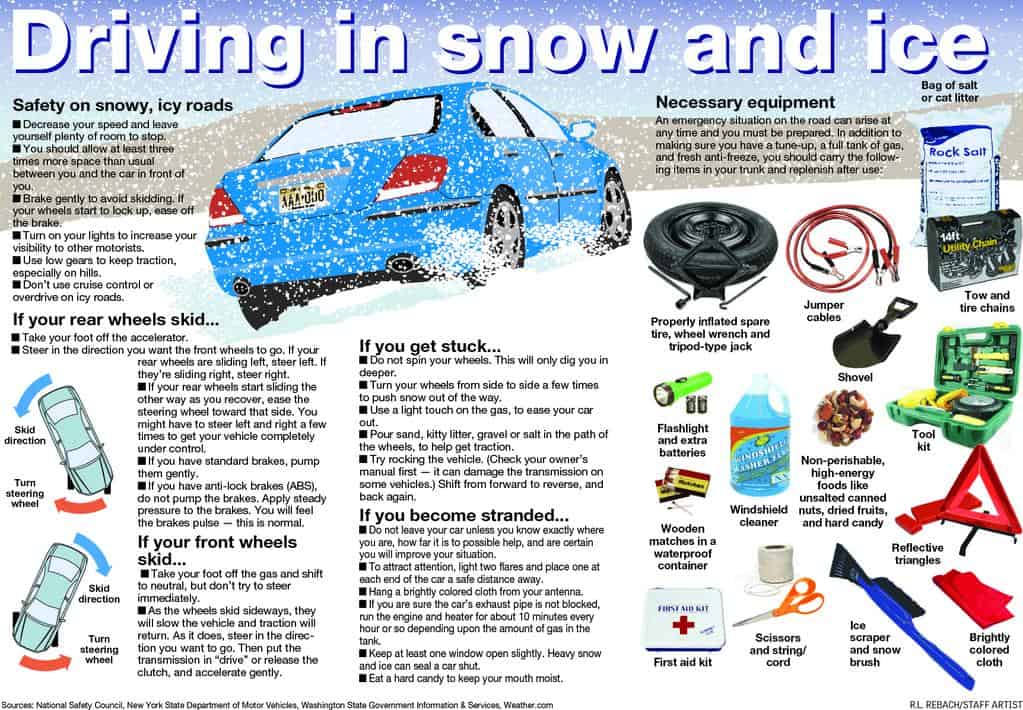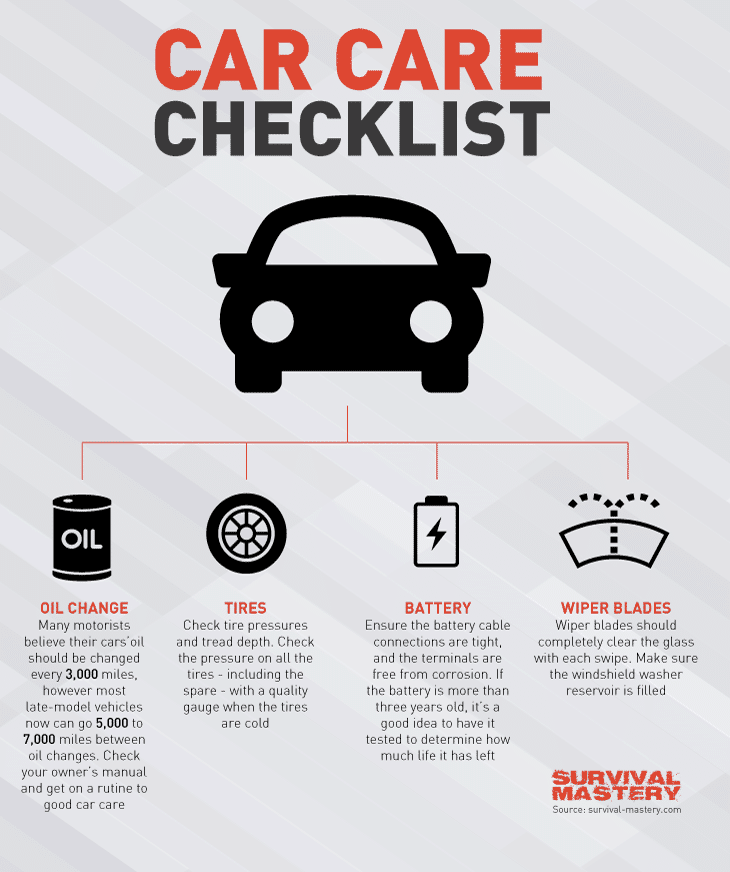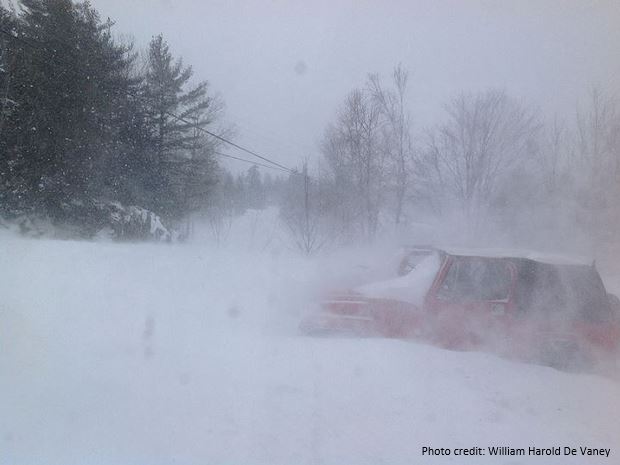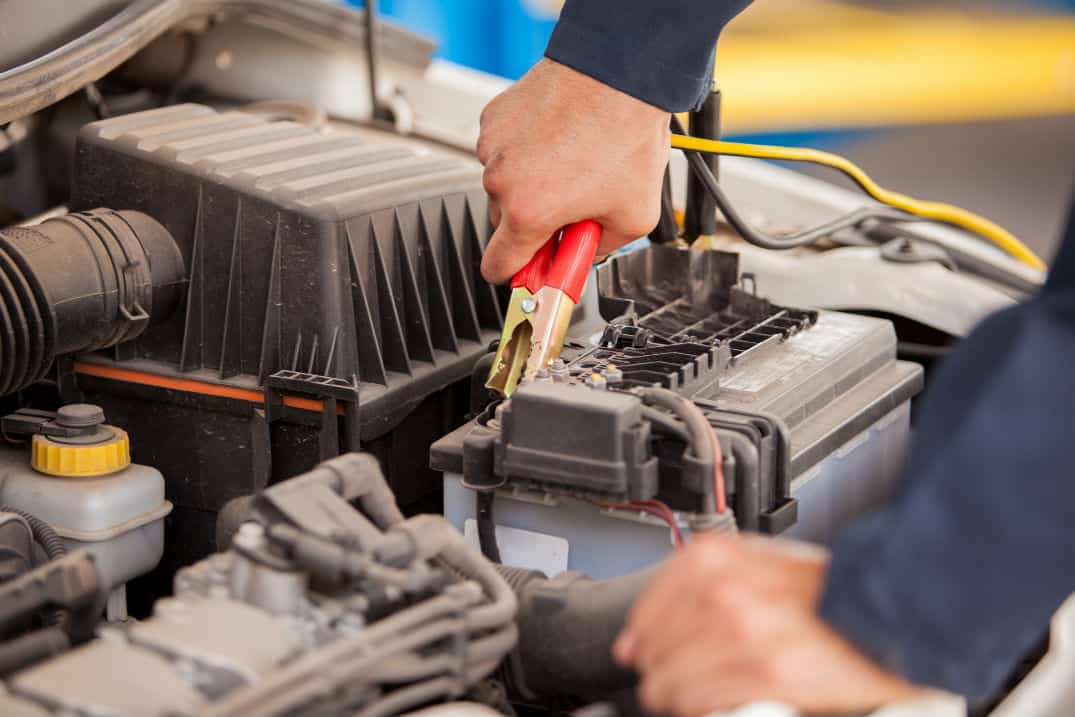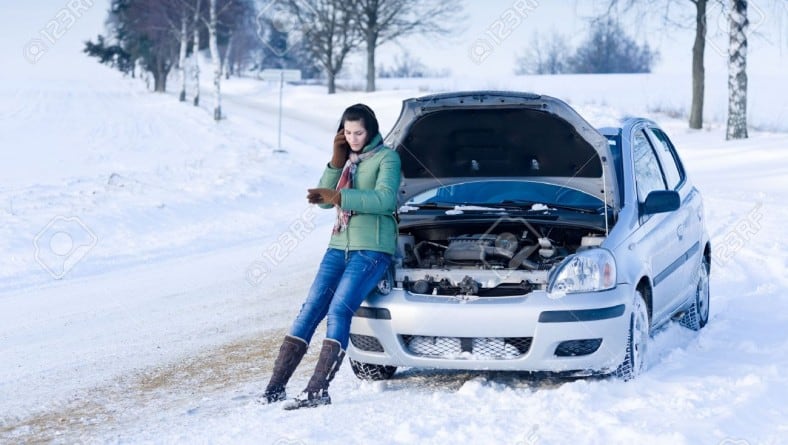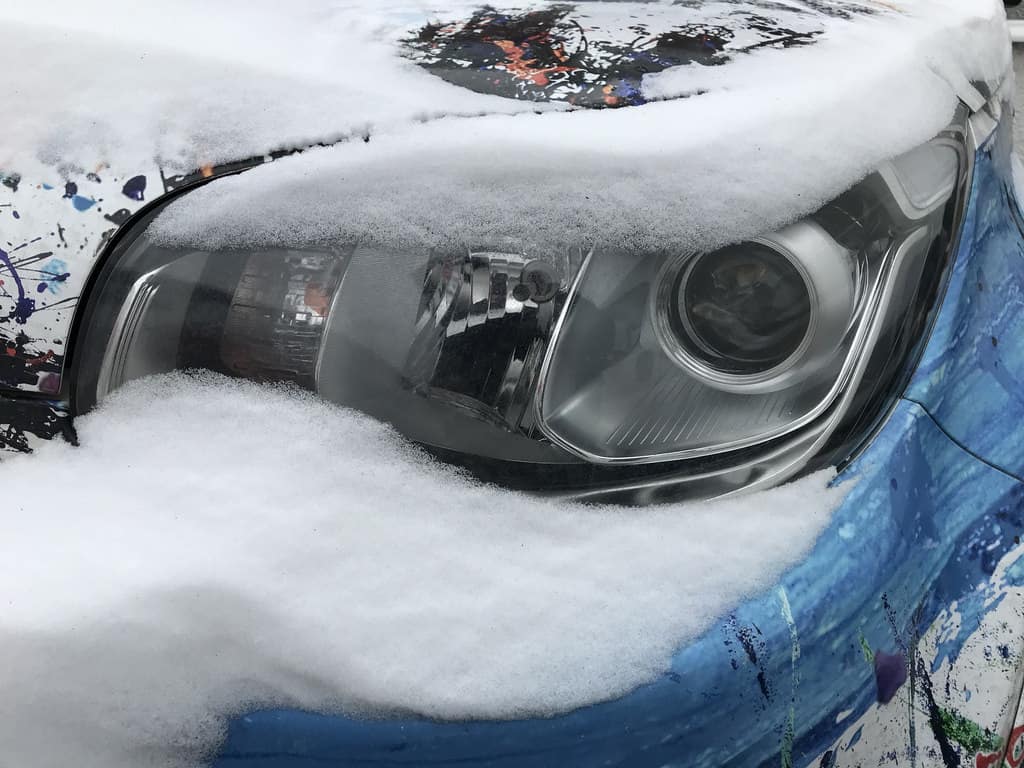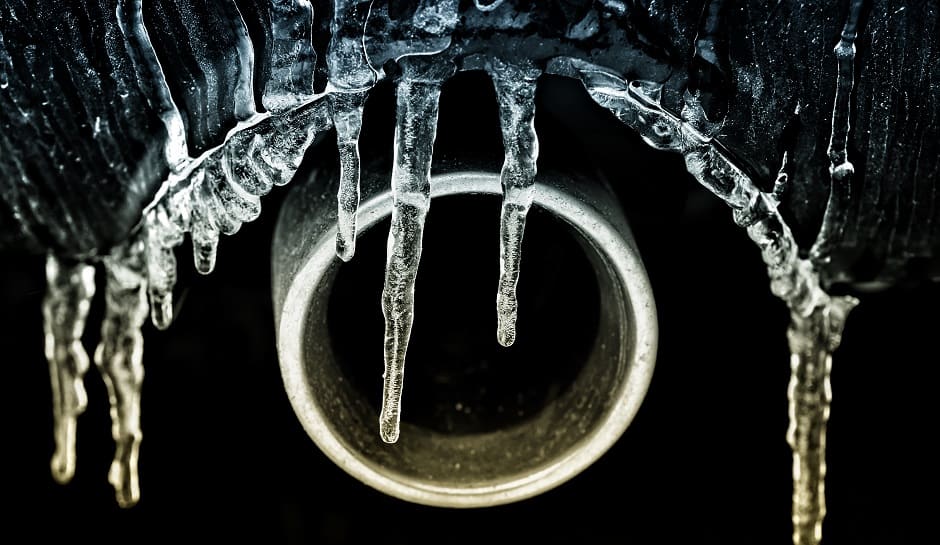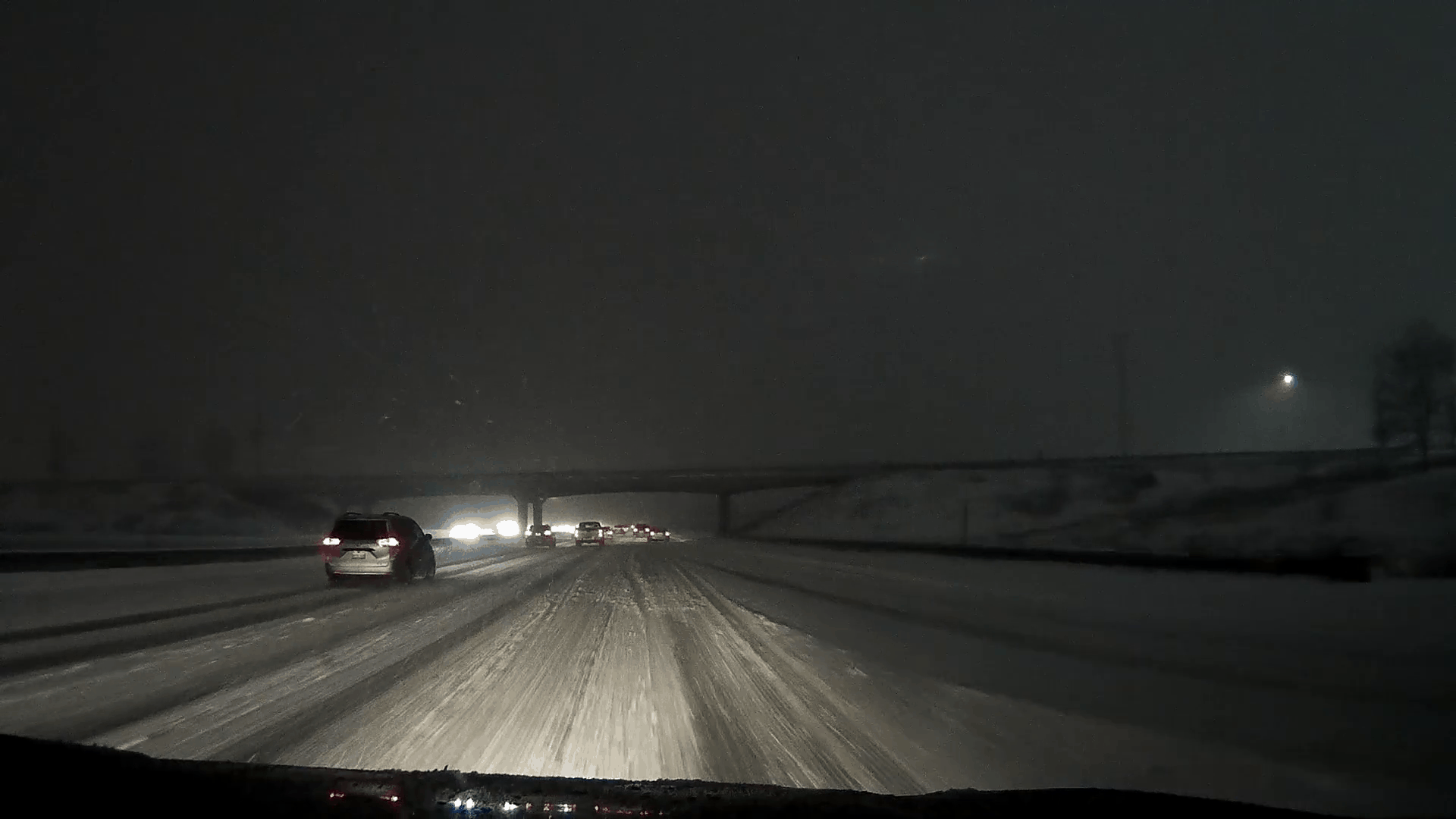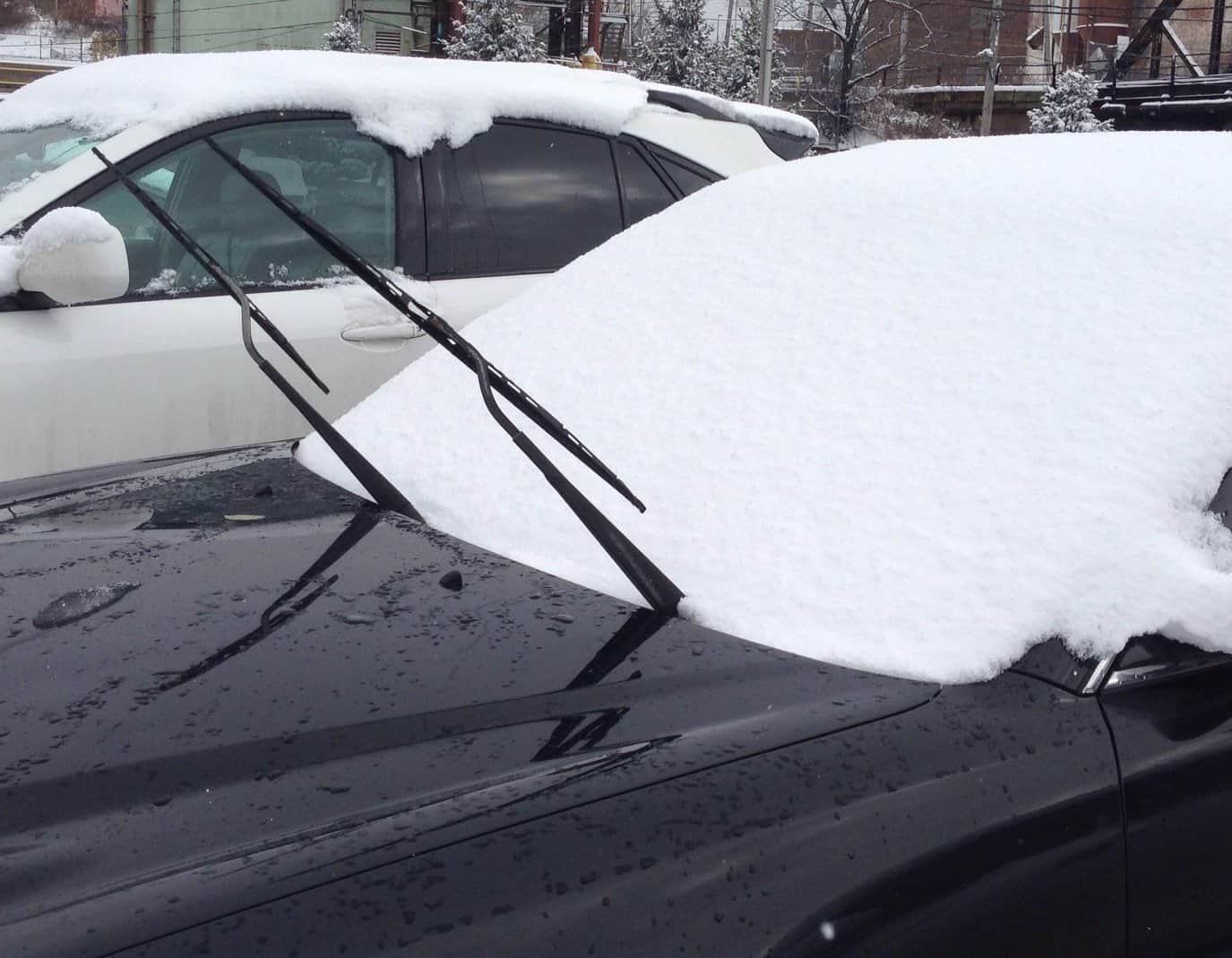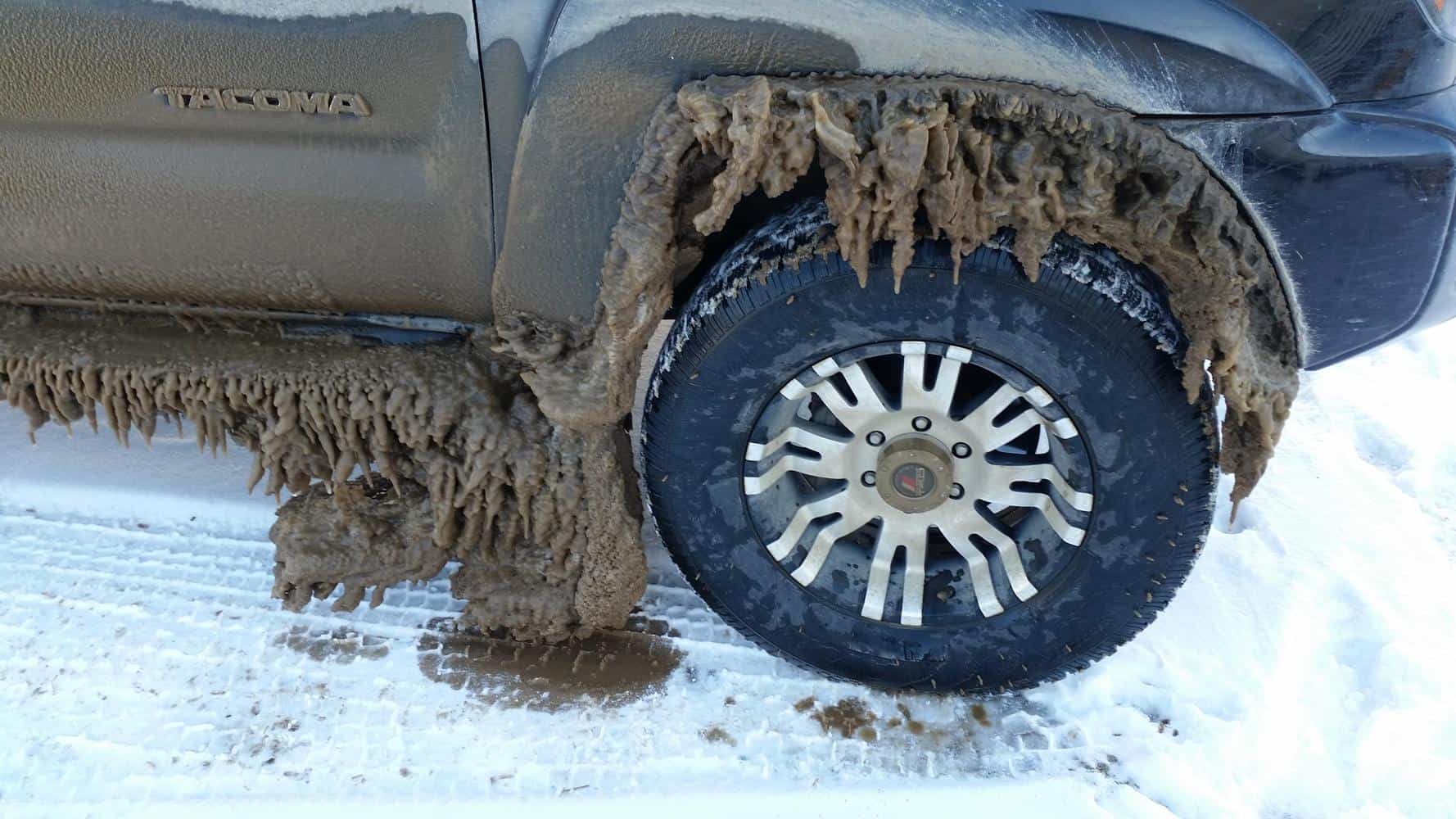When it comes to driving, we’ll admit that we occasionally lack confidence in the winter. Because we know that, however, we’re extra diligent, keep our wits about us, and always make sure that our car is in tip top shape. We’re also always on the lookout for good tips and tricks to make driving and road trips in snow and cold weather as safe as possible for our family!
Just in case you’re interested in making sure your car and driving habits are in tip top shape for getting around this winter as well, here are 15 of the most useful tips we’ve been given this year alone.
1. Keep the right things in your car for road trips
It’s a great idea to have a supplies kit on any long drive no matter the season, but it’s especially important in the winter. That’s why Pale Gal Advice suggests making sure to put things like an ice scraper, spare warm gloves, a shovel, some blankets, and a first aid kit in a box in the trunk. You never know when these things will help you!
2. Have your seasonal car maintenance done before snow comes
Of course, getting your car serviced regularly is always important, but it’s particularly well timed if you do it during the fall, right before the first snow kicks off winter. According to AAA Exchange, this makes sure your car is is particularly road ready and safe by the time conditions get slippery!
3. Take it easy on turns
We all know how easy it is to speed, especially on turns and hills, but it’s pertinent to slow down a little and take care in the winter. Because the roads are icy and wet, you’re much more prone to skid at high speeds! Check out Raleigh Classic to learn more about how and why you should slow down on turns when you drive in snow.
4. Know what to do if you get stuck in the snow
Before you go on any kind of long distance trip, it’s always important to know what to do if your car breaks down or you get stranded somewhere. That’s especially important, however, when temperatures are extremely low and snow might keep your car where it is until you free it or get rescued! Try to familiarize yourself with this helpful infographic from Garrard EMA.
5. Keep an eye on your oil and tire pressure
Checking your tire pressure is important because your tires can actually lose pressure when the weather gets very cold or when temperatures fluctuate and then suddenly drop. Without proper tire pressure, you might find your car harder to control in cicy conditions. Survival Mastery has more information for you on why it’s important and how to maintain it.
6. Check conditions and forecasts before you drive
We’ll admit that we can be bad for not thinking to check the conditions before we get on the road, but it’s actually very important. According to Weather, knowing what you’re facing before you get going will help you prepare for what’s ahead and perhaps even make the decision to stay in if you have warning that, say, a snow storm is headed your way.
7. Check your battery periodically
Once again, checking the battery in your car is always important. In the winter, however, it’s particularly important to ensure that you have as little a chance as possible of breaking down and being stranded in cold weather. Very extreme temperatures can also cause your battery to stall, but Hiland Toyota has more information for you on how to avoid that and what to do if it happens.
8. Stay fuelled to reduce breakdown chances
You’re probably sensing a trend by now, but we reiterate because these things really are that important! By keeping your car filled, you not only reduce your chances of being stranded on the side of an icy road, but you also decrease the likelihood that a small amount of gas in your car will get so cold that your car won’t start. Take a look at McConville Recovery Specialist to learn more.
9. Wipe snow from your lights before you drive
This particular tip is especially important at night. Even if the snow covering your headlights looks like it’s thin or like there isn’t that much, it can drastically decrease your visibility by blocking the light out. As you’ll read on Cottman, that’s more dangerous than usual in conditions where you can still slide on the road if you suddenly slam on your breaks because you didn’t have enough light to see by.
10. Remove snow from the tailpipe
A blocked tailpipe can do all kinds of damage to your car if it goes on long enough, but winter is an especially risky time for snow packed pipes causing carbon monoxide build up in the car. Because carbon monoxide poisoning can be fatal, ABC 7 Chicago particularly stresses the importance of clearing snow from the tailpipe if you get stuck in the winter.
11. Take special care driving in the dark
This might sound like common sense, but we reiterate that care is important in conditions where your breaks might not be as effective as usual. First Aid Store suggests slowing your speed a little and paying close attention to the road and how much snow is packed there so you know what kinds of grooves and so on your tires might be facing.
12. Keep an eye on your anti-freeze at all times
It’s called anti-freeze, after all, and when would you need it more than in the winter? Whereas in the summer, when you can hop out of your car and refill something under your hood in quick, mild conditions, winter proves much harder thanks to slipperiness, precipitation, and the need for mittens thanks to cold temperatures. If you follow in Calgary Car Detailing‘s footsteps and keep essentials like your anti-freeze filled at all times and checked before you leave home, you can avoid that fandango!
13. Keep an eye on your windshield wipers and fluid all winter
Just like they are in heavy rain, your windshield wipers are essential to safe driving because they basically determine your visibility in a snow storm. Travelers encourages you to check regularly that they’re working but also that your wiper fluid is topped up, so you don’t face the challenges we listed above!
14. Clear snow and ice from your tire wells before you drive
The more that snow and ice is allowed to build up around your tires, the more likely something is to become damaged or blocked, affecting how your car runs and moves. Like Wheel on Road says, it’s particularly important for you to have good control over your vehicle any time you drive on wetness or snow, so clearly the wheel wells out is a first step!
15. Always keep a safe distance from the car in front of you
We know we’ve talked a lot about slippery roads right now, but that’s one of the biggest challenges you’ll face any time you drive this winter! Because you’re more likely to slide or experience a lack in your breaks’ effectiveness, Smart Trucking suggests keeping an extra bit of distance between you and the car in front of you at all times. This will stop you from being part of a rear ending or “fender bender” in the event that you do slide a little when you hit your breaks.


